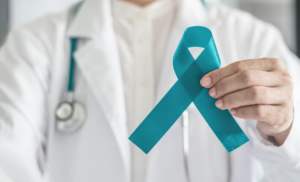April is Cancer Prevention and Control Month
April is cancer prevention and control month. For this reason, Fulcro joins this campaign to carry on the message of prevention and taking action. According to the Centers for Disease Control and Prevention (CDC), in 2019 alone, the United States reported 1,752,735 new cases of cancer and 599,589 people lost their lives due to this disease.
The numbers show how important it is to prevent and detect cancer at an early stage. Prevention can reduce the risk of suffering from any disease and early detection leads to more successful treatment and recovery, as well as reducing the risk of death.
Risk factors
In order to prevent cancer, the first thing we must keep in mind is that it is not a single disease, but a group of diseases and factors that are related to it. Certainly, we cannot know why one person gets cancer and another doesn’t. However, the National Cancer Institute explains that there are certain factors and habits that have been linked to an increased chance of developing cancer. These factors are divided into two categories: factors that increase risk and factors that affect or influence the risk of developing cancer (put at risk or protect).
Factors that increase the risk of developing cancer:
1. Smoking
Cigarette smoking is estimated to cause nearly 30% of all cancer deaths in the U.S. Cigarette smoking is the leading cause of the following types of cancer: acute myelogenous leukemia (AML), bladder cancer, cervical cancer , esophageal cancer, kidney cancer, lung cancer, oral cavity cancer, pancreatic cancer, and stomach cancer. Not smoking or quitting smoking lowers the risk of cancer and of dying from this disease.
2. Viral and bacterial infections
Certain viruses and bacteria can cause cancer. For example, the Human Papillomavirus (HPV) increases the risk of developing cervix, penis, vagina, anus, and oropharynx cancer. On the other hand, the hepatitis B and hepatitis C viruses increase the risk of liver cancer, and the Epstein-Barr virus increases the risk of Burkitt lymphoma. Furthermore, the Helicobacter pylori bacteria increases the risk of stomach cancer.
3. Excessive exposure to radiation
There are two main types of radiation linked to an increased risk of cancer: ultraviolet radiation and ionizing radiation. Ultraviolet radiation is what produces sunlight and is the main cause of non-melanoma skin cancers. Ionizing radiation is used in medical tests such as X-rays or X-rays, CT Scans, fluoroscopy, nuclear medicine, and can be found in radon gas in homes.
4. Immunosuppressive drugs
These drugs are used after an organ transplant from one person to another and prevent rejection of the organ being transplanted. They also lower the body’s immune response, which prevents organ rejection. Immunosuppressive drugs are associated with an increased risk of cancer, as they decrease the body’s ability to prevent cancer from developing. The risk of developing cancer, especially cancer caused by a virus, is highest during the first 6 months after an organ transplant but lasts for many years.
Factors that affect the risk of developing cancer:
1. Diet
According to the American Society of Clinical Oncology, it is difficult to study the effects of diet and developing cancer, because what a person eats includes foods that protect against cancer and foods that increase the risk of cancer. However, there is concern about the consumption of highly processed foods, red meats and processed meats. Red meat includes pork, beef, veal, and lamb. Processed meat includes bacon, ham, sausage, jerky, sausage, salami, and other cold cut products. Eating processed meat, in any amount, and eating more than 18 ounces of fresh meat per week have been associated with cancer risk. Some research shows that food preparation may also influence risk or benefits.
2. Alcohol consumption
The consumption of alcoholic beverages is associated with a higher risk of the following types of cancer: cancer of the oral cavity, cancer of the esophagus, cancer of the breast, cancer of the colon and rectum (in men). Alcohol consumption may also increase the risk of liver cancer and cancer of the colon and rectum in women.
3. Physical activity
Physical activity protects against breast cancer and endometrial cancer in postmenopause. In fact, people who are physically active have a lower risk of certain cancers than people who are not physically active at all; although it is not known if physical activity is the reason for this.
4. Obesity
Having a body mass index greater than 30 has been linked to an increased risk of the following types of cancer: postmenopausal breast cancer, colorectal cancer, endometrial cancer, esophageal cancer, kidney cancer, and pancreatic cancer. In addition, obesity has been shown in some studies to be a risk factor for gallbladder cancer and liver cancer. At this time, it is not known whether weight loss reduces the risk of obesity-related cancers, although it has been shown to reduce the risk of other chronic diseases.
5. Diabetes
Although this has not yet been established as an absolute risk factor, diabetes may slightly increase the risk of some types of cancer. Undoubtedly, both diseases share some of the same risk factors, so it is very difficult to establish if the risk is increased by diabetes or by the factors they share.
6. Environmental risk factors
Exposure to chemicals and other substances in the environment has been linked to some cancers. A relationship has been found between air pollution and cancer risk.
Cancer Prevention and Control
There are several preventive interventions that reduce the risk of cancer. The National Cancer Institute defines an intervention as “…a treatment or action taken to prevent or treat disease, or otherwise improve health.”
Early detection
Before undergoing any examination, consult with your doctor about the benefits and side effects, if any. Early detection tests can help find cancer early, before symptoms appear, so it may be easier to treat or cure. By the time symptoms occur, cancer may have formed and spread to other parts of the body, making it more difficult to treat or cure. Some screening tests include:
- Physical exam and family history
- Lab tests
- X-ray or plates
- genetic testing
Healthy lifestyles
Living a healthy lifestyle can be a protective factor for your overall health, not just for preventing cancer. It is important that you take into account the following recommendations:
- Avoid smoking or exposure to secondhand smoke
- Avoid excessive consumption of alcoholic beverages
- Avoid highly processed foods, processed and red meats
- Avoid excess artificial sweeteners and sugars
- Get 2.5 hours of exercises a week
- Get an annual preventive exam
Chemoprevention
Refers to the use of substances to reduce the risk of cancer or prevent it from coming back. Substances can be natural or produced in the laboratory. Some of the medications that are being used for this type of intervention are selective estrogen receptor modulators (SERMs), finasteride, and COX2 inhibitors. These treatments are administered by a doctor and are recommended for people who are at high risk of certain types of cancer.
The risk of suffering from cancer can be measured in different ways and are classified as: absolute risk, relative risk and relative chance. Knowing who is most at risk for certain types of cancer can help doctors decide when and how often to screen them. Check your risk level with your doctor and coordinate your early detection exam.
—
References:
- American Society of Clinical Oncology (ASCO). (2019). Food and Cancer Risk. ASCO. https://www.cancer.net/navigating-cancer-care/prevention-and-healthy-living/food-and-cancer-risk
- Centers for Disease Control and Prevention (CDC). (2022) Cancer Data and Statistics. CDC. https://www.cdc.gov/cancer/dcpc/data/index.htm
- National Cancer Institute (NCI). (2022). Cancer Screening Overview. NCI. https://www.cancer.gov/about-cancer/screening/patient-screening-overview-pdq


